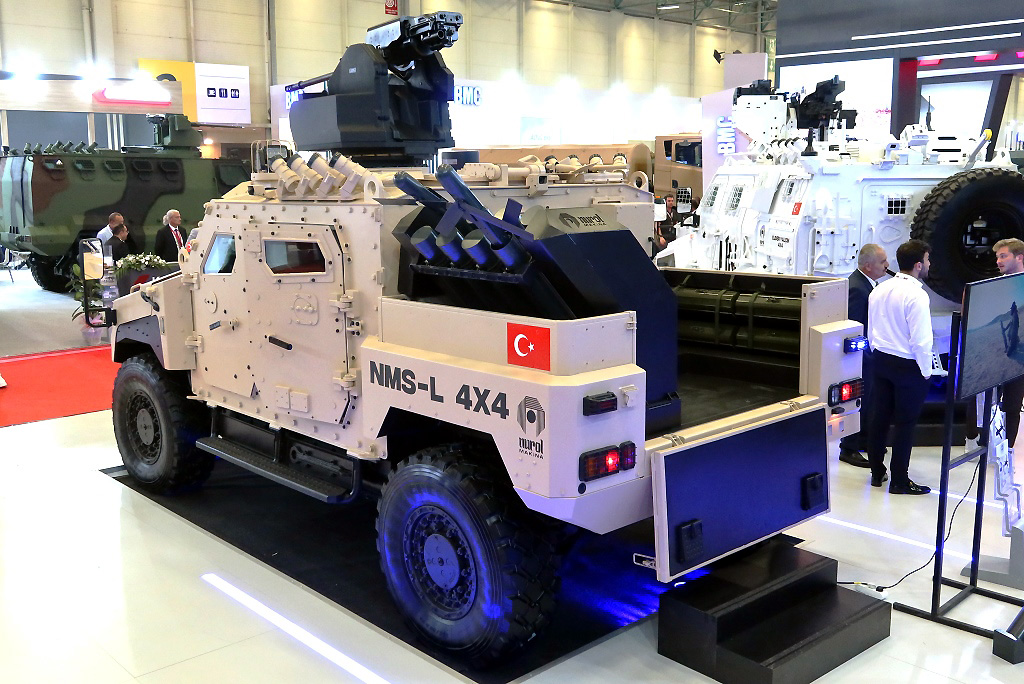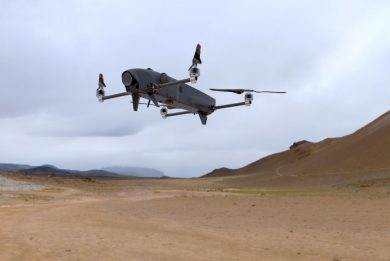
IDEF 2023 – Spira unveils Ilgar, a new loitering munition
Looking for new vehicles it may happen to find something different, such as a new loitering munition. Called Ilgar, it was visible at IDEF 2023 on board the new NMS-L 4×4 launched by Nurol Makina at the Istanbul exhibition.
Loitering munitions are proliferating in these days, and at IDEF 2023 one of them could be seen integrated into a light armoured vehicle, the NMS-L unveiled by Nurol Makina at the Istanbul exhibition. Known as Ilgar, it is developed and manufactured by Spira.

With a total mass of 3.5 kg, 1.5 kg the air vehicle and 2 kg the launch tube, an infantryman can easily transport the Ilgar, multiple launchers being available for integration on vehicles. While the solution seen at IDEF was fitted to a pick-up type vehicle, drawings provided by Spira show a six-cell launcher integrated in an armoured infantry fighting vehicle in raised position, the system in rest position remaining protected by an armoured cover; the company proposes its integrated systems both with manual or automatic reloading. Spira proposes its loitering munition for integration on naval assets as well as on air platforms.
The air vehicle architecture is common to many other loitering munitions, the cylindrical body carrying forward wings folding backwards, while the rear tail planes fold forward, the two vertical stabilisers also folding forward. Powered by an electric motor, this drives a two-blade pushing propeller with folding blades.

The Ilgar is launched through a pneumatic system, a compressed air bottle being sufficient for three operations. The cold launch system allows reusing the launch tube for over 200 flights, Spira sources told EDR On-Line. The air vehicle quickly reaches the 120 km/h cruise speed, the endurance being 15 minutes, which gives an effective range of over 20 km. It is designed to operate even at high altitude, up to 5,000 metres above sea level, while operational height above surface is usually 250 metres.
It is usually launched on target coordinates, the ruggedised touch-screen computer ground control station allowing easy programming via user-friendly interface software. The planning can be modified in flight thanks to the two-way secure data link, decision-making algorithms helping the operator. Should a moving object be the target a tracking system allows following it. The day/night camera installed in the nose allows engaging target of opportunities that might appear along the Ilgar path, or selecting a higher value asset in the original target area.
Once the target has been positively identified the Ilgar switches in attack mode diving on the enemy asset, its speed increasing up to 160 km/h, the 400 grams multi-purpose warhead being capable to defeat 200 mm rolled homogeneous armour, with secondary anti-personnel effect.

The system installed on the NMS-L was made of eight tubes; the rack was fitted on the left side, tubes being angled roughly at 45° elevation, the right side hosting spare munitions. The vehicle back door allowed operators inside the cabin to easy exit the protected volume to reload the tubes; the cabin layout saw the driver front left, with the commander at his right, the ground control station being located behind the driver, in front of the loitering munition operator. From that position the operator handles all the mission, which can be also followed by the commander on his display.
Spira told EDR On-Line that the warhead has been qualified and is currently undergoing environmental tests. The company says that the Ilgar will be ready for demonstration flights in November, while serial production should start in March 2024.
Photos by P. Valpolini



